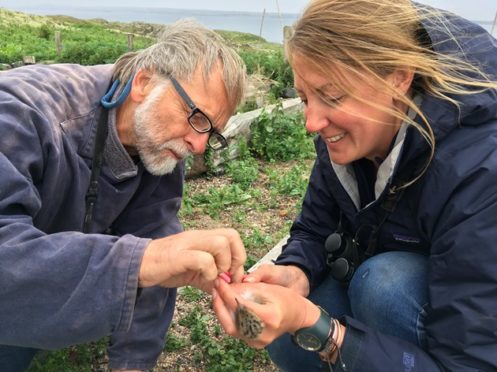An extremely rare seabird has raised its chick on the Isle of May this summer – with conservationists claiming it is a clear sign their policies are working.
An adult roseate tern joined common, sandwich and Arctic tern colonies on the Scottish Natural Heritage reserve in the Firth of Forth in June and paired with a common tern.
The couple produced a single chick which successfully fledged in early August.
Roseate terns are on the Red Data list as a species of high conservation concern.
No other roseate terns currently breed in Scotland. The only colony in the UK is in Northumberland, with single pairs in North Wales.
With its stunning white plumage, long black-tail streamers and black cap and beak, the roseate tern is an eye-catching sea-bird.
Its name derives from the pinkish tinge adults develop on their underside in summer.
Special ‘tern terraces’, built by SNH staff, attracted the bird to the island. These large, square areas are covered in sand and gravel, with boxes added to help aid nesting.
David Steel, SNH Nature Reserve Manager, said: “We started constructing the first tern terraces on the island to help increase nesting habitat for terns in 2015.
“Over the last three years, we’ve increased both arctic and common tern breeding numbers, while also attracting sandwich terns back to the island.
“But this year, we have gone one better with this stunning roseate tern. Providing the right habitat and safe nesting sites for roseate terns is a major breakthrough.
“Although this year’s chick is the result of a hybrid pair, we will hopefully attract a pair of roseates in the next few years and bring another species back to Scotland.”
Dr Paul Morrison, UK Roseate Tern Ambassador, added: “I’m delighted that the Isle of May has attracted a roseate tern this year.
“I am confident, that with careful management of the habitat, this year marks the start of the return of the roseate terns to this wildlife haven.”
Roseate terns have been designated for protection under the government’s national Biodiversity Action Plan.
